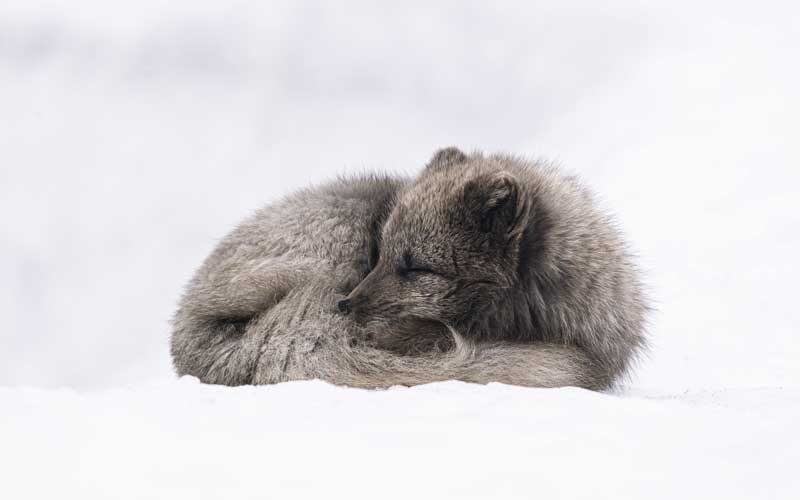Hibernation is a remarkable survival strategy that animals have evolved to overcome extreme environmental conditions. It involves a state where animals significantly lower their body temperature and metabolic rate over a prolonged period to conserve energy and survive. In this essay, we will delve into the definition and types of hibernation, the physiological mechanisms behind it, the survival advantages it offers, and its evolutionary significance. (Barnes, 2024)
Definition and Types of Hibernation
Hibernation is a state where animals reduce their physiological activities to endure extreme environmental conditions. It can be broadly categorized into two types:
- True Hibernation: In true hibernation, animals almost completely cease their physical activities, lowering their body temperature to near ambient levels. During this state, their heart rate and respiration significantly decrease, and they rely on stored fat as an energy source to survive long periods. Examples of true hibernators include bears, squirrels, and bats. These animals drastically reduce their body temperature and metabolic rate to minimize energy consumption and ensure survival.
- Torpor: Torpor is a shorter-term state where animals temporarily lower their body temperature and physiological activities. This state can last for days or weeks, and animals can easily wake up to replenish their energy if needed. Animals such as hamsters and many birds utilize torpor to cope with environmental changes for shorter periods. (Boyer and Barnes, 2024)
Physiological Mechanisms
The physiological mechanisms of hibernation can be explained by two main factors: temperature regulation and energy conservation.
- Temperature Regulation: During hibernation, animals lower their body temperature to near ambient levels, reducing their metabolic rate and energy consumption. This temperature regulation protects animals from extreme cold and helps them survive harsh winter conditions by minimizing physiological functions and conserving energy.
- Energy Conservation: With a reduced metabolic rate, animals rely on stored fat for energy during hibernation. This strategy allows them to survive periods when food is scarce, particularly in winter. Stored fat continuously supplies the necessary energy, enabling animals to maintain their physiological functions over an extended period. (CAREY, ANDREWS and MARTIN, 2024)
Survival Advantages
Hibernation offers several survival advantages:
- Food Scarcity in Winter: Finding food can be extremely difficult in winter. Hibernation allows animals to overcome food scarcity by using stored energy, enabling them to survive even when food is unavailable.
- Temperature Fluctuations: Extreme temperature changes can severely impact an animal’s physiological functions. By lowering their body temperature during hibernation, animals can minimize these risks and protect themselves from extreme cold, ensuring survival in harsh winter environments.
- Natural Disasters: Hibernation also serves as a means to cope with environmental stressors such as climate changes and natural disasters. It provides a safe way for animals to avoid these stresses, increasing their chances of survival. (Geiser, 2024)
Evolutionary Significance
Hibernation holds significant evolutionary importance beyond being a mere physiological adaptation. Animals that hibernate adopt a sustainable survival strategy that allows them to effectively respond to environmental stressors. This adaptation maximizes their chances of survival and reproduction, enhancing their ability to cope with environmental changes.
Hibernation also provides crucial insights into the study of animal physiology and ecology, helping us understand how animals survive in extreme conditions. Research into hibernation sheds light on the complexities of life and the wonders of nature, offering valuable knowledge on the survival strategies of animals. (Humphries, Thomas and Speakman, 2024)
Conclusion
Hibernation is a vital survival strategy that allows animals to adapt to extreme environmental conditions. By regulating their body temperature and metabolic rate, animals conserve energy and respond to challenges such as food scarcity and temperature fluctuations. The process of hibernation exemplifies the marvels of nature and the complexity of life. Research into hibernation not only enhances our understanding of animal physiology and ecology but also explains how organisms adapt and survive in their natural habitats. Through the study of hibernation, we gain a profound appreciation for the intricacies of life and the wisdom of nature. (Ruf and Geiser, 2024)
References
Barnes, B., 2024. Freeze avoidance in a mammal: body temperatures below 0 degree C in an Arctic hibernator. Science, 244(4912), pp.1593–1595. doi:https://doi.org/10.1126/science.2740905.
Boyer, B.B. and Barnes, B.M., 2024. Molecular and Metabolic Aspects of Mammalian Hibernation. BioScience, 49(9), pp.713–724. doi:https://doi.org/10.2307/1313595.
CAREY, H.V., ANDREWS, M.T. and MARTIN, S.L., 2024. Mammalian Hibernation: Cellular and Molecular Responses to Depressed Metabolism and Low Temperature. Physiological Reviews, 83(4), pp.1153–1181. doi:https://doi.org/10.1152/physrev.00008.2003.
Geiser, F., 2024. Metabolic Rate and Body Temperature Reduction During Hibernation and Daily Torpor. Annual Review of Physiology, 66(1), pp.239–274. doi:https://doi.org/10.1146/annurev.physiol.66.032102.115105.
Humphries, M.M., Thomas, D.W. and Speakman, J.R., 2024. Climate-mediated energetic constraints on the distribution of hibernating mammals. Nature, 418(6895), pp.313–316. doi:https://doi.org/10.1038/nature00828.
Ruf, T. and Geiser, F., 2024. Daily torpor and hibernation in birds and mammals. Biological Reviews, 90(3), pp.891–926. doi:https://doi.org/10.1111/brv.12137.
